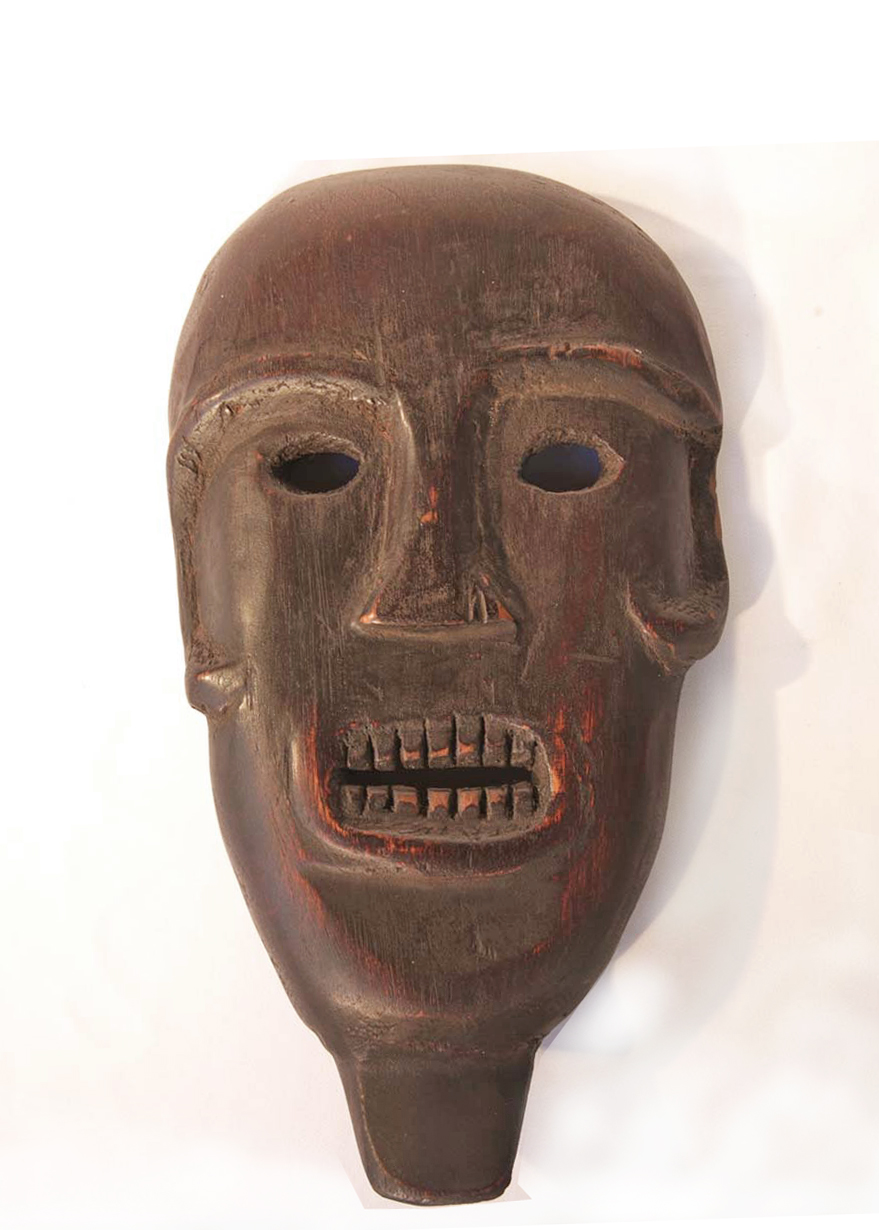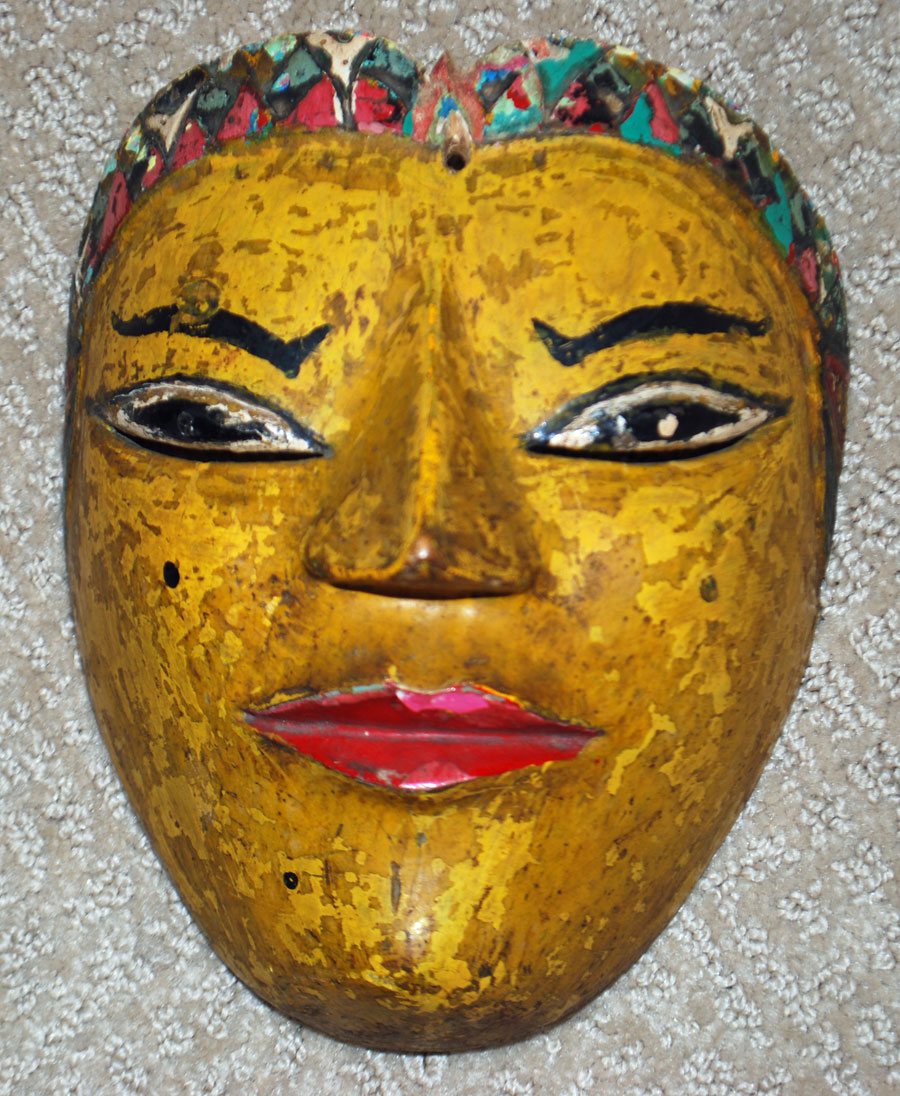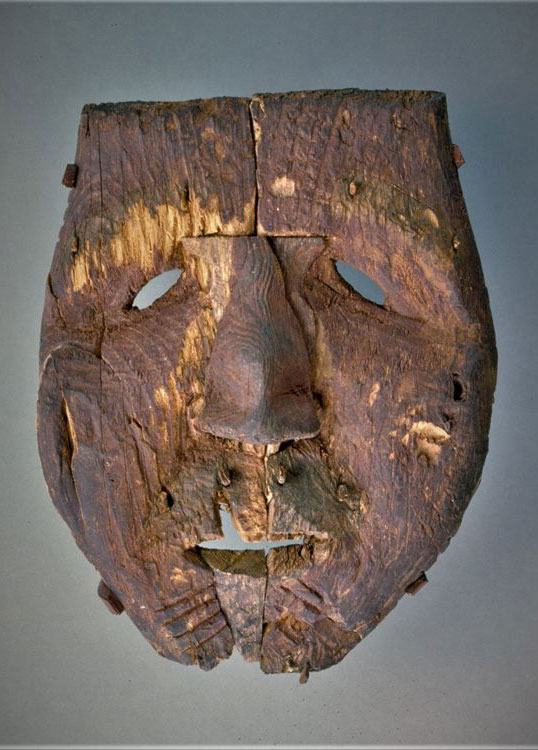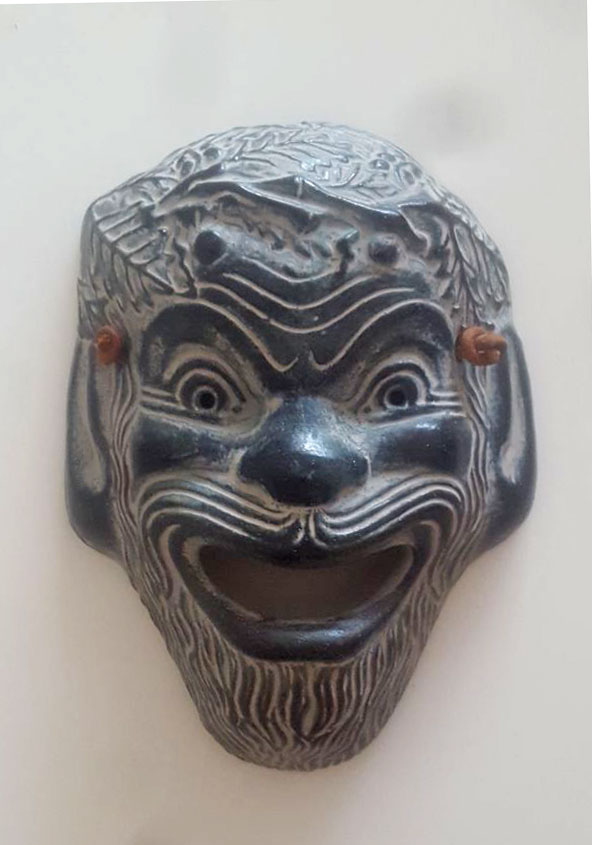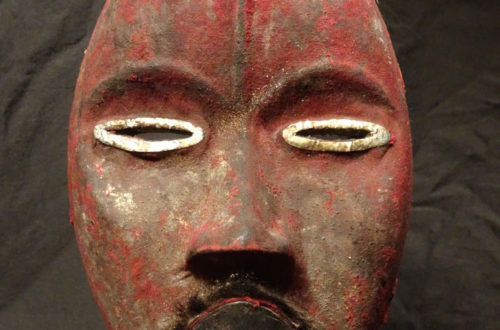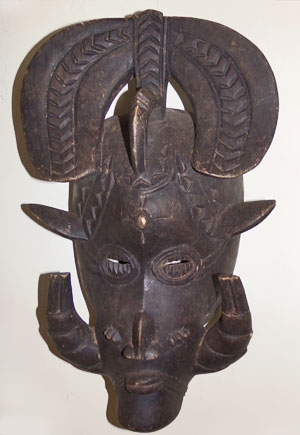 The island of Timor gave rise to a distinctive tradition of dance masks whose precise origins and significance remain uncertain. What information exists suggests that many of the masks originated in East Timor. Portraying both male and female ancestors, they were worn by men during dances and other ceremonies, including celebrations of victory in war.
The island of Timor gave rise to a distinctive tradition of dance masks whose precise origins and significance remain uncertain. What information exists suggests that many of the masks originated in East Timor. Portraying both male and female ancestors, they were worn by men during dances and other ceremonies, including celebrations of victory in war.
When in use, the masks were typically painted, adorned with strips of hide or bristles representing facial hair, and worn with a headdress or hood that covered the head to further conceal the dancer’s identity. Some masks were made from perishable materials, but wood examples, such as this highly polished and deeply patinated work, were evidently preserved and reused many times. Most of the old examples have lost their paint and other adornments. This particular mask looks old, but may be new. It is difficult to determine authenticity from just one 72dpi photo.
I noticed when I checked the archives section that my filing is not always correct. I first went to “East Asia” and noticed there should be more masks from Timor. Then I went back and searched with the key word “Timor” and found several more. You should know that any word can be searched, such as tribal names, particular countries, etc.
